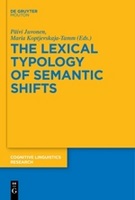Chapter 17 Motivation by formally analyzable terms in a typological perspective
An assessment of the variation and steps towards explanation
Author(s)
Urban, Matthias
Contributor(s)
Koptjevskaja-Tamm, Maria (editor)
Juvonen, Päivi (editor)
Collection
European Research Council (ERC); EU collectionLanguage
EnglishAbstract
This article tackles a question raised by one of the founding figures of lexical typology, Stephen Ullmann: to what degree do languages differ in the extent to which they resort to morphologically analyzable lexical items? Drawing on a worldwide sample of 78 languages for which a standard set of 160 mostly nominal meanings is investigated, the article demonstrates that variability in this area is indeed profound. Correlations between the relative prevalence of analyzable items in a language with the size of its consonant inventory, the complexity of its syllable structure, and the length of its nominal roots suggest that, typologically, languages with a simple phonological structure are those in which analyzability in the lexicon is most profound. Possible explanations for this observation in terms of the avoidance of homonymy and pressure exerted by different linguistic subsystems on each other are discussed.
Keywords
Lexicography; Typology; Cross-Linguistic ComparisonDOI
10.1515/9783110377675-017ISBN
9783110610673; 9783110393064OCN
1135847837Publisher
De GruyterPublisher website
https://www.degruyter.com/Publication date and place
Berlin/Boston, 2016Grantor
Classification
Linguistics


 Download
Download